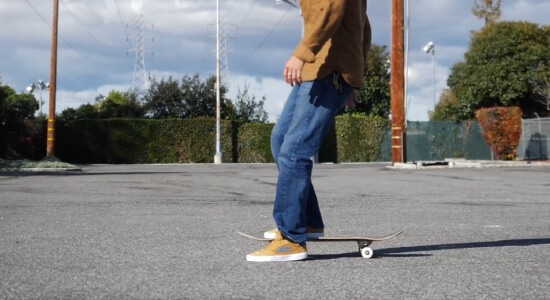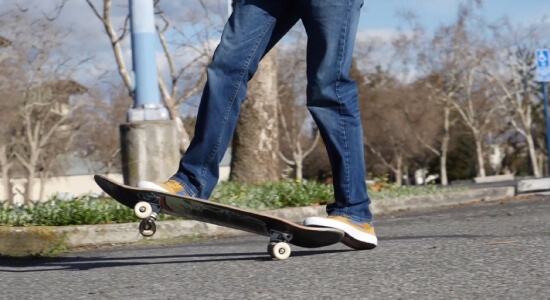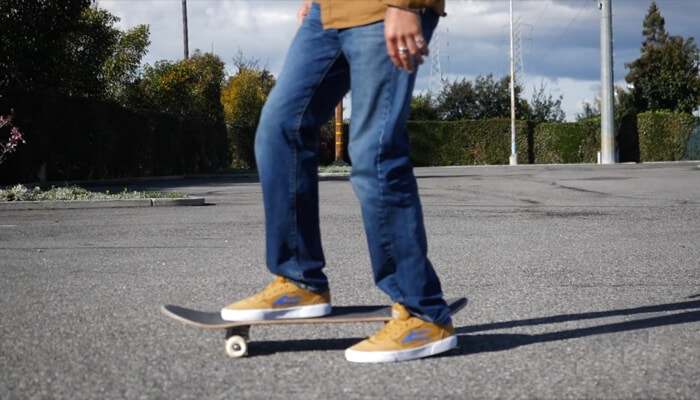Skateboarding: the mere thought of it conjures images of wind rushing past, wheels against the pavement and that indescribable thrill of riding the board. Whether you’re an emerging skater testing the waters or a seasoned pro hungry for more, one skill towers above the rest in importance – the art of slowing down and stopping.
Speed is your ally in this electrifying world of skating, but it can swiftly turn into your adversary if not harnessed correctly. That’s why we’ve crafted this comprehensive guide dedicated to teaching you the precise techniques and methods to master slowing down on a skateboard.
Before we dive into the nitty-gritty details of these techniques, it’s crucial to understand why slowing down on a skateboard is more than just a skill – it’s a lifeline. With its high-speed adventures and lightning-fast maneuvers, skateboarding holds boundless excitement but also harbors the potential for accidents and injuries if speed isn’t tamed.
Learning to slow down effectively opens doors to navigating crowded urban landscapes. Also, avoid obstacles gracefully and maintain an unshakable grip on your skateboard. It ensures a safe ride with supreme control. Let’s dive into the methods right away.
The Foot Drag Technique: A Beginner’s Approach

The foot drag technique is one of the easiest ways for beginners to slow down on a skateboard. Dragging your back foot along the ground to create friction, gradually reducing your speed. To perform a foot drag, follow these steps:
- Position your front foot slightly forward, similar to when you’re pushing off.
- Gently drag your back foot along the ground, using the sole of your shoe to create friction.
- Gradually increase the pressure on your back foot to slow down further.
- Maintain balance and control by keeping your weight centered over the skateboard.
While the foot drag technique is relatively simple, it can cause wear and tear on your shoes. Therefore, it’s best to reserve this method when you need to slow down quickly or are still mastering other techniques.
The Tail Drag Technique: A More Advanced Approach

The tail drag technique offers better control and less shoe wear for riders looking for a more efficient way to slow down. The tail drag involves using the tail of your skateboard to create friction and gradually reduce your speed. Here’s how to perform a tail drag:
- Move your back foot to the edge of the tail, placing it where it can touch the ground.
- Apply slight pressure on the tail, allowing it to drag along the ground.
- Adjust the amount of pressure to control your speed and slow down gradually.
- Keep your front foot balanced and centered on the skateboard for stability.
The tail drag technique is particularly effective when riding downhill, allowing you to maintain better control and navigate steep slopes safely.
Riding Into a Hill: Going with the Flow
Riding on a hill might be a more practical method for slowing down, but it can be a fun and natural way to control your speed. When you encounter a hill while skateboarding, you can take advantage of the incline to slow down without much effort. Here’s how to ride into a hill:
- Direct your skateboard towards the hill and ride up the incline.
- Your speed will naturally decrease as you ascend due to the uphill slope.
- Once you reach the top, your skateboard will lose momentum and slow down.
- Use your balance and foot placement to control your speed and maintain stability.
While riding on a hill may not always be feasible, it’s a helpful technique to keep in mind when you can utilize natural terrain to your advantage.
The Powerslide Technique: Mastering Control and Style
The powerslide technique combines control and style to effectively slow down on a skateboard. It involves initiating a slide with your wheels to create friction and reduce your speed. Here’s how to perform a powerslide:
- Bend your knees and get low, preparing for the slide.
- Position your front foot on the front of the skateboard for balance.
- Place your back foot on the board’s tail, ready to initiate the slide.
- Turn your shoulders and hips in the desired direction of the slide.
- Apply pressure on the tail and use your body’s twisting motion to initiate the slide.
- Slide your wheels across the ground, creating friction to slow down.
- Keep your weight centered and balanced throughout the slide.
Powerslides require practice and skill, but once mastered, they offer excellent control and style while slowing down on a skateboard.
Here is a video you can watch and learn how it is down
Frequently Asked Questions (FAQ)
How Can You Brake on a Skateboard?
You can use several braking techniques to slow down and stop on a skateboard. The foot drag, tail drag, riding into a hill, and powerslide techniques mentioned earlier are all effective ways to brake. You can also use your feet to push down on the skateboard’s tail to raise the front and create friction, which helps you come to a stop.
How Do I Stop Going Downhill on a Skateboard?
When going downhill on a skateboard, it’s crucial to have effective braking techniques to maintain control and safety. Foot braking is a standard method skateboarders use to slow down gradually. You create friction and reduce speed by gently dragging your foot along the ground. Powerslides are also effective for stopping or slowing down when riding downhill.
What Should I Do If I Can’t Stop or Slow Down?
If you cannot stop or slow down on a skateboard, it’s essential to prioritize your safety. In such situations, it’s recommended to bail or jump off your skateboard. While this may result in some scrapes or bruises, it’s safer than risking an accident or injury due to uncontrollable speed. Remember always to wear proper safety gear to protect yourself while skateboarding.
Conclusion
Mastering slowing down on a skateboard is crucial for maintaining control, navigating obstacles, and ensuring safety while riding. You can effectively slow down and stop on your skateboard confidently by learning and practicing foot-dragging, tail-dragging, riding into a hill, and powerslides. Remember to prioritize safety, wear appropriate protective gear, and continually practice your skills to enhance your control and enjoyment of skateboarding.
